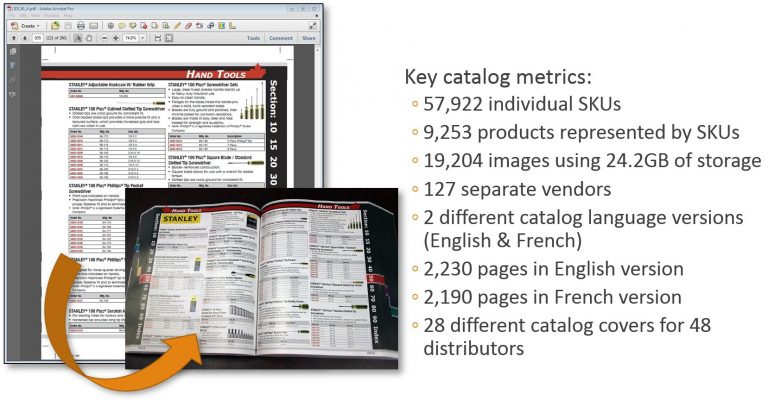Why do you keep getting catalogs and sales flyers in your mailbox?
Hasn’t everyone converted to buying on-line?
Aren’t catalogs time consuming and expensive to create?
Something just doesn’t seem right. With all of the various ways one can order goods and services on-line, why is it that retailers and distributors still take the time money to create and send paper catalogs?
The answer is pretty simple. Catalogs drive more sales.
If you know what you are looking for, web shops are ideal. They allow you to find exactly what you are looking for, comparison shop for the best price, and place your order. But how do you get people to buy when you have something to sell that they may not know exists? Or that what you have meets an unmet need they aren’t consciously aware off?
There is something nearly magical about taking text, numbers, and pictures that are locked up in your enterprise data stores and bringing it to life on a printed page. Converting bits and bytes into beautiful high resolution images and artfully styled text for a reader to consume is art. And science.
Once put onto pages that project your brand with messaging and content that connect your buyer, you’ve turned your data into a tactile and visual experience that can’t be matched with a browser on a phone, tablet, or computer screen. Done properly, catalogs can motivate your customers to buy in ways that a web-shop on its own cannot.
- They inspire.
- They engage.
- They evoke emotion.
- They help customers dream about what they could have.
- They drive customers to make purchase online.
- They buy more products when they purchase online.
- They spend more money when they purchase online.
- They increase sales with targeted catalogs based on customer buying behavior analytics.
- They help customers find things they aren’t necessarily looking for.
Many retailers with a rich history of catalog sales cut back on publishing catalogs in order to save money. What happened? Sales plummeted. For example, JC Penney decided that if they didn’t revive their catalogs after a 5 year hiatus, their on-line sales would continue to suffer. It was a hard lesson learned. What many have learned is that there is a significant number of customers that prefer to browse a printed catalog and then place their orders on-line. Others have found that their catalog customers spend more on-line. Some estimate that up to 30% of their on-line sales are driven off printed catalogs.
The old days of the full “big book” catalog may be gone for many. Savvy retailers and distributors are using sales analytics in conjunction with database driven print technology to create catalogs with custom assortments and pricing targeted at high value customers.
That’s where Infoverity can help. We can connect the data in your enterprise product information management system to the creative tools used to make catalogs and sales flyers. This efficiency gain helps lower the cost of catalog production while insuring accuracy of the printed page and consistency with your web shop. That’s the science part. Your graphics design team puts it all together to inspire and engage the reader. That’s an art. Together, we can help you convert your data into dollars.

Figure 1 – Infoverity Staff Use Print IT Expertise Coupled with Real World Production Experience to Help Customers Sell More Products
Coming next: 3 Keys to Making Catalogs Better, Faster, and Cheaper
To let us know what you think about this article or to get more information regarding PIM-driven catalogs and flyers, contact dnacy@infoverity.com
Dave Nacy,
Managing Consultant
